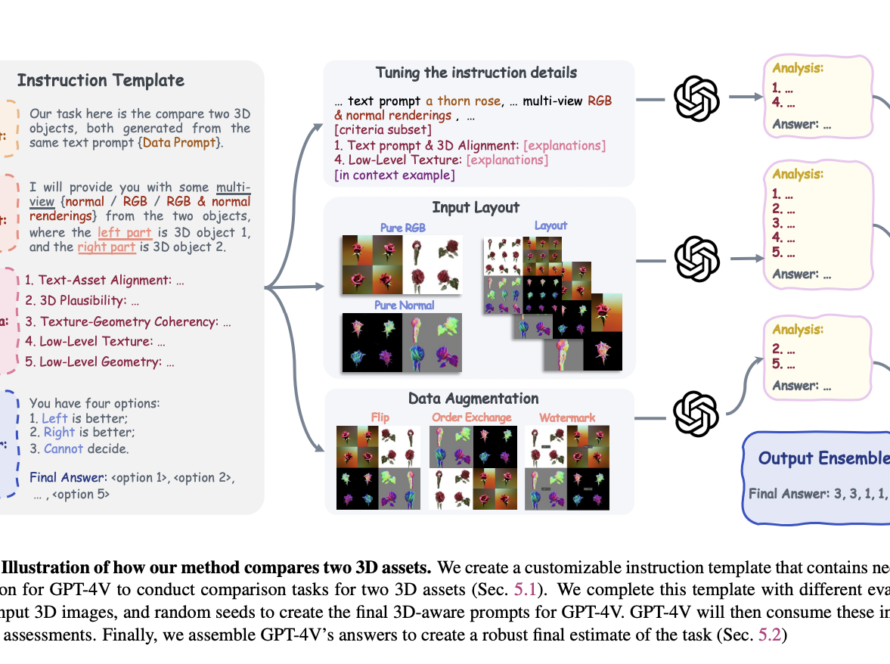[ad_1]
In the domain of computer vision, particularly in video-to-video (V2V) synthesis, maintaining temporal consistency across video frames has been a persistent challenge. Achieving this consistency is crucial for synthesized videos’ coherence and visual appeal, which often combine elements from varying sources or modify them according to specific prompts. Traditional methods in this field have heavily relied on optical flow guidance, which calculates motion between video frames. However, these methods often need to improve, especially when faced with inaccuracies in optical flow estimation. This leads to common issues like blurring or misaligned frames, detracting from the overall quality of the synthesized video.
Addressing these challenges, researchers from The University of Texas at Austin and Meta GenAI have developed FlowVid. This innovative approach introduces a paradigm shift in handling imperfections in flow estimation. FlowVid’s methodology is distinct from its predecessors in several ways. It doesn’t strictly adhere to optical flow guidance. Instead, it harnesses the benefits of optical flow while simultaneously managing its inherent imperfections. This is achieved by encoding optical flow through warping from the first frame and using it as a supplementary reference in a diffusion model. The model, thus, allows for various modifications, including stylization, object swaps, and local edits, while ensuring that the temporal consistency of the video is preserved.
FlowVid’s methodology extends further into the intricacies of video synthesis. It employs a decoupled edit-propagate design, which involves editing the first frame using prevalent image-to-image (I2I) models. These edits are then propagated through the rest of the video using the trained model. This approach ensures that changes made in the initial frame are consistently and coherently reflected across the entire video. The researchers’ innovation also lies in their approach to handling spatial conditions. They utilize depth maps, which serve as a spatial control mechanism to guide the structural layout of synthesized videos. This inclusion significantly improves the overall output quality and allows for more flexible editing capabilities.
The performance and results of FlowVid stand out starkly against existing methods. In terms of efficiency, it outstrips contemporary models like CoDeF, Rerender, and TokenFlow, particularly in swiftly generating high-resolution videos. For instance, FlowVid can produce a 4-second video with a resolution of 512×512 in just 1.5 minutes, a feat that is 3.1 to 10.5 times faster than state-of-the-art methods. This efficiency does not come at the cost of quality, as evidenced by user studies where FlowVid was consistently preferred over its competitors. The study highlights its robustness, with a preference rate of 45.7%, significantly outperforming others. These results underline FlowVid’s superior capability to maintain visual quality and alignment with the prompts.
FlowVid represents a significant leap forward in the field of V2V synthesis. Its unique approach to handling the imperfections in optical flow, coupled with its efficient and high-quality output, sets a new benchmark in video synthesis. It addresses the longstanding issues of temporal consistency and alignment, paving the way for more sophisticated and visually appealing video editing and synthesis applications in the future.
Check out the Paper. All credit for this research goes to the researchers of this project. Also, don’t forget to join our 35k+ ML SubReddit, 41k+ Facebook Community, Discord Channel, LinkedIn Group, Twitter, and Email Newsletter, where we share the latest AI research news, cool AI projects, and more.
If you like our work, you will love our newsletter..
Muhammad Athar Ganaie, a consulting intern at MarktechPost, is a proponet of Efficient Deep Learning, with a focus on Sparse Training. Pursuing an M.Sc. in Electrical Engineering, specializing in Software Engineering, he blends advanced technical knowledge with practical applications. His current endeavor is his thesis on “Improving Efficiency in Deep Reinforcement Learning,” showcasing his commitment to enhancing AI’s capabilities. Athar’s work stands at the intersection “Sparse Training in DNN’s” and “Deep Reinforcemnt Learning”.
[ad_2]
Source link



